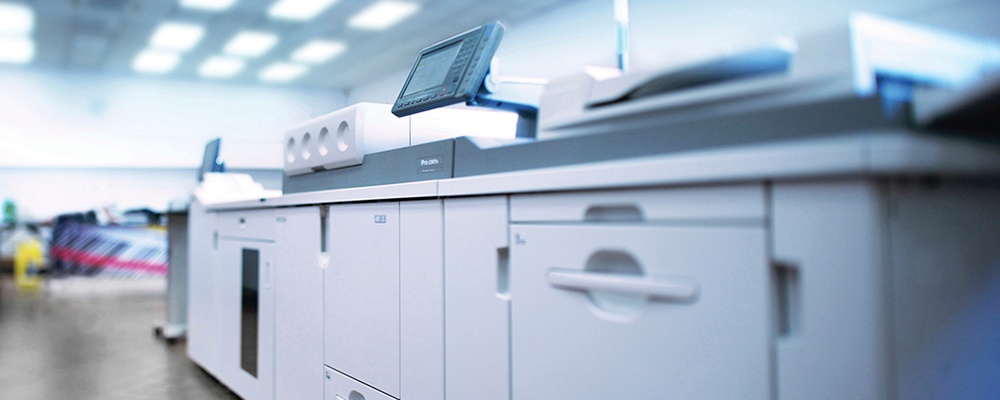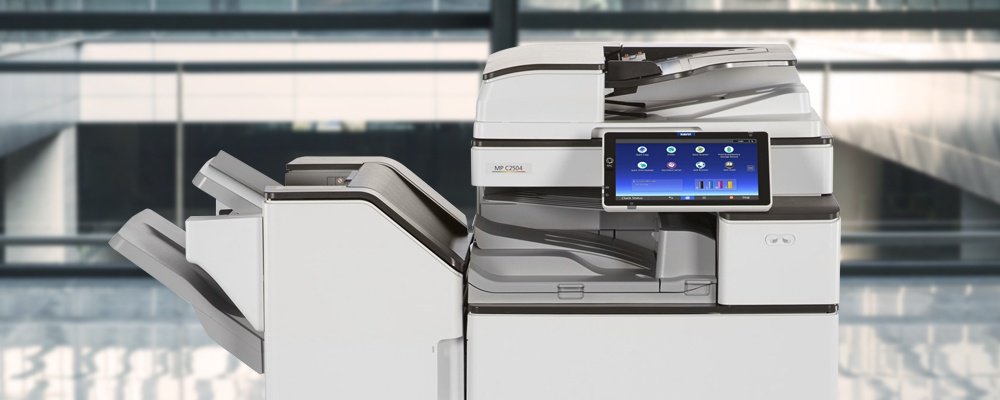No matter what industry you’re in, and no matter how digital the world gets, every modern office needs printing technology. The only questions are about the type and scale.
There’s no single type of printing technology that works for every office, but there are a few methods that stand above the rest.
Here’s what you need to know about each:
Inkjet vs. Laser Print Technology
When shopping for office printing solutions, you’re going to encounter inkjet and laser printers more often than any other, and for good reason. Both are good at producing low-cost images, and the price range of the hardware itself has fallen over the years.
Inkjet Printers
Inkjet printing is the use of digital print heads that propel ink onto paper to create an image.
These printers have the advantage of a low up-front cost and a low operating cost. However, this is often canceled out by the maintenance cost of ink.
Ink cartridges are outfitted with microchips that tell the printer when they are out of ink and block the printer from operating without ink. The problem is, these microchips often malfunction and estimate that the cartridge is empty when it still has hundreds of print cycles left.
This means office managers often have no choice but to discard hundreds or thousands of dollars worth of functional ink each year.
Inkjet printers do have a place in small offices that don’t use much ink, to begin with, but for offices with high print volume, laser printing is often the right choice.
Laser Printers
Laser printing is the use of an electrostatic laser to transfer an image to paper, using a combination of powder toner and heat.
This has multiple advantages over inkjet printing:
-
It costs less per page.
-
The end product is not moisture-sensitive like inkjet prints tend to be.
-
The process is quicker, and you don’t need to wait for the end product to dry.
Another major advantage is that duplex printing is possible with laser printers without compromising the image quality. Duplex printing is the practice of printing on both sides of paper simultaneously, which cuts paper costs in half.
Decades ago, cost used to be the primary reason most offices didn’t have a laser printer.
The cost of laser print technology has fallen dramatically over the years: the current cost of an entry-level printer is a mere 2.14% of what it was in 1984. Today, the laser printer is affordable enough for every office.

Printing in the Office Setting
Some offices can get away with a single printer type, while others need to combine multiple printing solutions to cover all of their bases. Most offices can get by with a combination of:
Multifunction Printers
These are often laser printers that combine scanning, copying, and printing functionality. Inkjet versions are also common, especially as the small office or home models.
For office use, you’ll want to look for a number of key features, such as:
-
Energy Star certification: Choosing an Energy Star certified printer for the office can help save you significantly on operating costs. Certified printers often have eco-friendly features such as Sleep mode, duplex printing, secure print mode, and toner saver mode. The average multi-function printer only spends 5% of its day in use, so make sure you’re not spending extra money to keep it powered on for the other 95% of each day.
-
Secure data transmission: Your office printer may be on its own private network, but that doesn’t mean that malicious entities can’t find their way onto that network to cause harm. If you print, scan, or copy any kind of sensitive information—including employee W-2s, etc.—then it is your responsibility to choose a printer with secure data transmission to keep that data in the right hands.
-
High output: Printer output is commonly measured in pages per minute (or PPM). A printer that operates with high PPM works more quickly, reducing the time your staff spends waiting in line to pick up their copies! Alternately, you can measure output by toner yield, or the number of printed pages you can get out of each new toner cartridge. This is calculated at 5% toner coverage per page.
-
High resolution: The higher the resolution your printer is capable of representing on paper, the crisper your images will be. This is important if you use small fonts on company communications and need high readability, or if you reproduce any kinds of images or graphics.
Wide Format Printers
Do you have any kind of in-house marketing or advertising? Then you have justification for a wide format printer. Being able to keep your posters and non-standard prints in-house can save you significantly over time.
You may think that your office doesn’t have a need for wide format printing on demand, but think about it. Wide format printing allows you to handle your own:
-
Event marketing
-
Conference marketing
-
Company culture materials (e.g. motivational prints, team event posters, etc.)
Imagine not having to make a purchase order with a third party every time your team attends a professional conference or runs a new sales contest. The convenience alone is tempting; the cost savings seals the deal.
Production Printing
If your office sends lots of custom mail, e.g. brochures or pamphlets, then a production printing suite can help prioritize low cost-per-page and also quick printing times.
The primary benefit of a production printing suite, over multi-function printing, is the focus on fast printing that doesn’t sacrifice quality. When you have print runs in the hundreds or thousands, you don’t have time to deal with low PPM ratings. A production printer gets the print run finished in a timely manner with a low cost per page, thanks to its efficient design.
Are you ready to get your office outfitted with the printing solutions you need?
